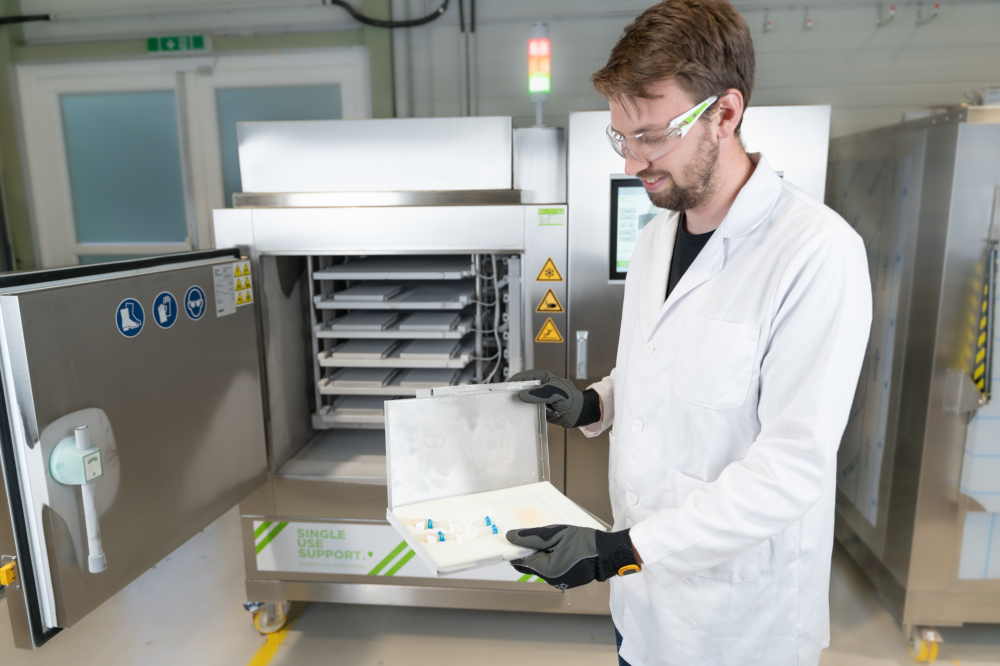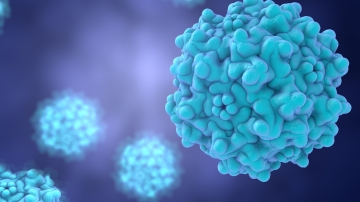Lentiviral vector manufacturing: Old but gold gene therapy viruses?
Table of contents
ShowDespite the fact that lentiviral vectors have been around some decades, the demand for scalable and effective manufacturing methods now rises in tandem with the need for innovative medicines. Due to their special advantages, lentiviral vectors have emerged as crucial instruments in gene therapy, and their advancement and application are still being encouraged. Let's examine lentiviral vectors and how they are produced, highlighting current developments and difficulties in this ever-evolving field.
A lentiviral vector: what is it?
Human immunodeficiency virus (HIV)-derived gene delivery techniques are known as lentiviral vectors. In order to promote long-term gene expression, these altered viruses are designed to safely transfer genetic material into target cells. Lentivral vectors, in contrast to the original virus, are made to be incapable of replicating, which guarantees that they do not spread infection or illness.
Types of Viral Vectors: Lentiviral Vector vs. AAV
Both lentiviral vectors (LV) and adeno-associated viruses (AAVs) are viral vectors that are widely used in gene therapy, but they possess distinct characteristics [1,2]:
Lentiviral Vector | AAV | |
| Cargo Capacity | Larger packaging capacity | Limited packaging capacity |
| Integration efficiency | High integration efficiency | Non-integrating, resulting in transient expression |
| Transgene expression | Long-term transgene expression | Long-term transgene expression, if low cell turnover |
| Profile range | Effective for both dividing and non-dividing cells | Tissue-specific tropism |
The selection between these vectors is influenced by the specific therapeutic application and target tissue.
Lentiviral vectors in Gene Therapy
Due in large part to issues that remained unresolved for late-stage therapeutics, lentiviral vectors in gene therapy were first employed as research instruments in molecular and cell biology. In recent years, nevertheless, they have seen a comeback, especially in the gene therapy sector. They are essential for treating a variety of genetic illnesses and tumors because of their capacity to efficiently transfer genes to different cell types, such as neurons and stem cells. There are a number of significant reasons for this increasing interest in lentiviral vectors:
- Better vector designs lead to improved safety profiles
- Effective clinical trials that show their efficacy
- Ex vivo patient cell modification for customized treatments
- The possibility of using in vivo gene editing applications
These advancements have positioned LVs as essential elements in the progress of innovative cell and gene therapies.
Manufacturing of Lentiviral Vectors
Plasmids' function in lentiviral vector production
The production of lentiviral vectors requires plasmids . They serve as the cornerstone for the therapeutic gene, regulatory elements, and viral structural proteins that make up the vector. To manufacture functional viral particles, multiple plasmids are often co-transfected into producer cells, such as HEK293T.
Cell line growth & transfection
Under strictly regulated circumstances, producer cells are grown in bioreactors. Transfection reagents are used to transfect the cells with a mixture of plasmids when the desired cell density has been reached. In order to produce high-titer vectors, this step is essential.
Whitepaper
Viral Vector Manufacturing: Navigating 5 Overlooked Challenges
Harvest & purification
After transfection, the viral particles are collected from the cell culture supernatant. The initial harvest goes through clarification and purification processes, including chromatography and filtration, to eliminate cellular debris and concentrate the vector product.
Aseptic filling of viral vectors
Maintaining an aseptically closed system is crucial in the manufacturing of lentiviral vectors. Automation is key to ensuring safety and efficiency while minimizing operator involvement in the aseptic filling processes. Modular systems, like the RoSS.FILL CGT platform, provide scalability and flexibility, enabling manufacturers to adjust to evolving production requirements. These systems can easily shift from clinical to commercial-scale production, effectively tackling the challenges associated with scale-up or scale-out strategies.

Controlled freezing to prevent lentiviral vector aggregation
The processes of freezing and thawing lentiviral vectors come with distinct challenges, with aggregation being a significant issue. Controlled freezing is vital for preserving the integrity and functionality of the vectors. Automated platform systems for controlled freezing & thawing, such as the RoSS.pFTU Mid Scale, are specifically engineered for viral vector production, offering precise control over cooling rates to enhance product quality post-freezing. These systems are fully scalable, capable of accommodating various batch sizes from clinical to commercial production and can freeze anywhere from a few to multiple of single-use bags.
Lentiviral vectors remain amidst gene therapy advancements
In summary, the manufacturing of lentiviral vectors is progressing, fueled by the increasing demand for gene therapies and other advanced treatments. As the field develops, innovations in production processes – from plasmid design to aseptic filling and controlled freezing – are addressing critical challenges and enhancing overall efficiency. With continuous research and development, lentiviral vectors are positioned at the leading edge of gene therapy, offering new opportunities for treating a wide array of diseases.
References
- Aldevron: Supporting AAV and Lentiviral Vector Development and Commercialization, 2020. Available at: https://www.aldevron.com/blog/supporting-aav-and-lentiviral-vector-development-and-commercialization
- Single Use Support: Adeno-associated viruses for gene therapy. 2023. Available at: Adeno-Associated Virus (AAV) for gene therapy (susupport.com)










